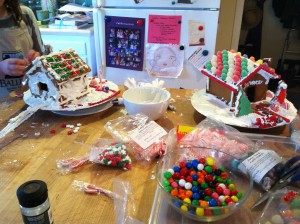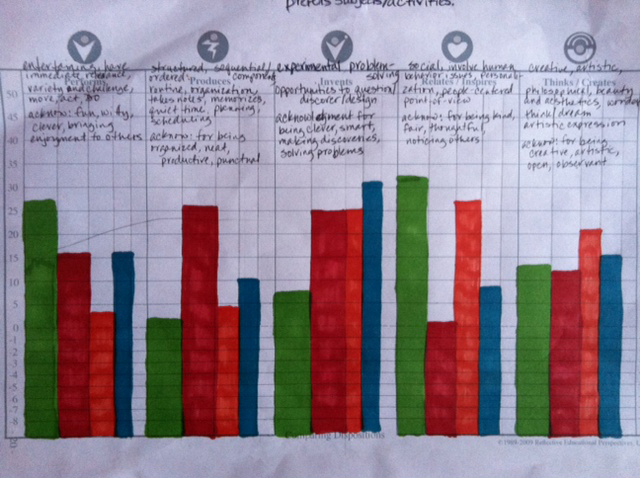As November came to a close, I was at a loss. Not the throw in the towel kind, but the back to the drawing board kind. In the moment, though, I needed an immediate plan, so my temporary answer was to take that open-ended time that all the experienced homeschoolers recommended; we’ll deschool in December.
My announcement went like this, “Let’s spend December getting ready for Christmas. We can make gifts and bake.” I suppose that wasn’t so open-ended, my need for a product very much intact, still we all thought it sounded pretty luxurious.
The first week we were off to a good start. My good friend and writing teacher, Susan Hagen, once worked as a baker at the Madonna Inn in San Luis Obispo back in her college days. Susan brought her gingerbread house patterns, recipes and love into our kitchen and spent two mornings making houses from scratch with Rue and Gigi. It was a sweet experience and we thoroughly enjoyed ourselves while gaining some new baking and decorating skills.

The rest of the month was filled with visits from family members, our regular schedule of science, horseback riding, and music classes, a trip down to see the reindeer at the Academy of Sciences, and a couple stage performances. Gigi spearheaded getting together the pictures for the Christmas card. She also spent much of her time reading and riding. At this point she was up to four days per week of horseback riding, two of the days working as trade for riding. Rue spent as much time as she could taking pictures, filming, and editing and working on her novel.
In educationalese, I would say we worked on the following subject matter and skills: Consumer Math, Angles, Geometry, Fractions, Project Planning, Language Arts, Computer Sciences, Biology, Large and Fine Motor Skills, Research, Design, and Visual and Performing Arts.
This was the first holiday season in memory where we had enough time to prepare for the holiday, see friends and family, and continue to do most of the activities that we enjoyed. It was ALMOST stress-free. And, in my experience, that’s saying something.
Now that I’m writing, I see that Rue and Gigi were involved in a project, a book, or an activity much of their time, but in December I felt guilty and somewhat irresponsible for allowing so much free time. It makes me wonder about how conditioned we are to believe that real learning doesn’t happen unless children are instructed in set time slots, using a specific lesson plan with a clear objective, and then evaluated using a standardized test. These tools make a certain amount of sense (honestly, I don’t think standardized testing ever makes sense) the way most schools are set up, but I began to see that they were completely unnecessary and irrelevant in our homeschool setting.

